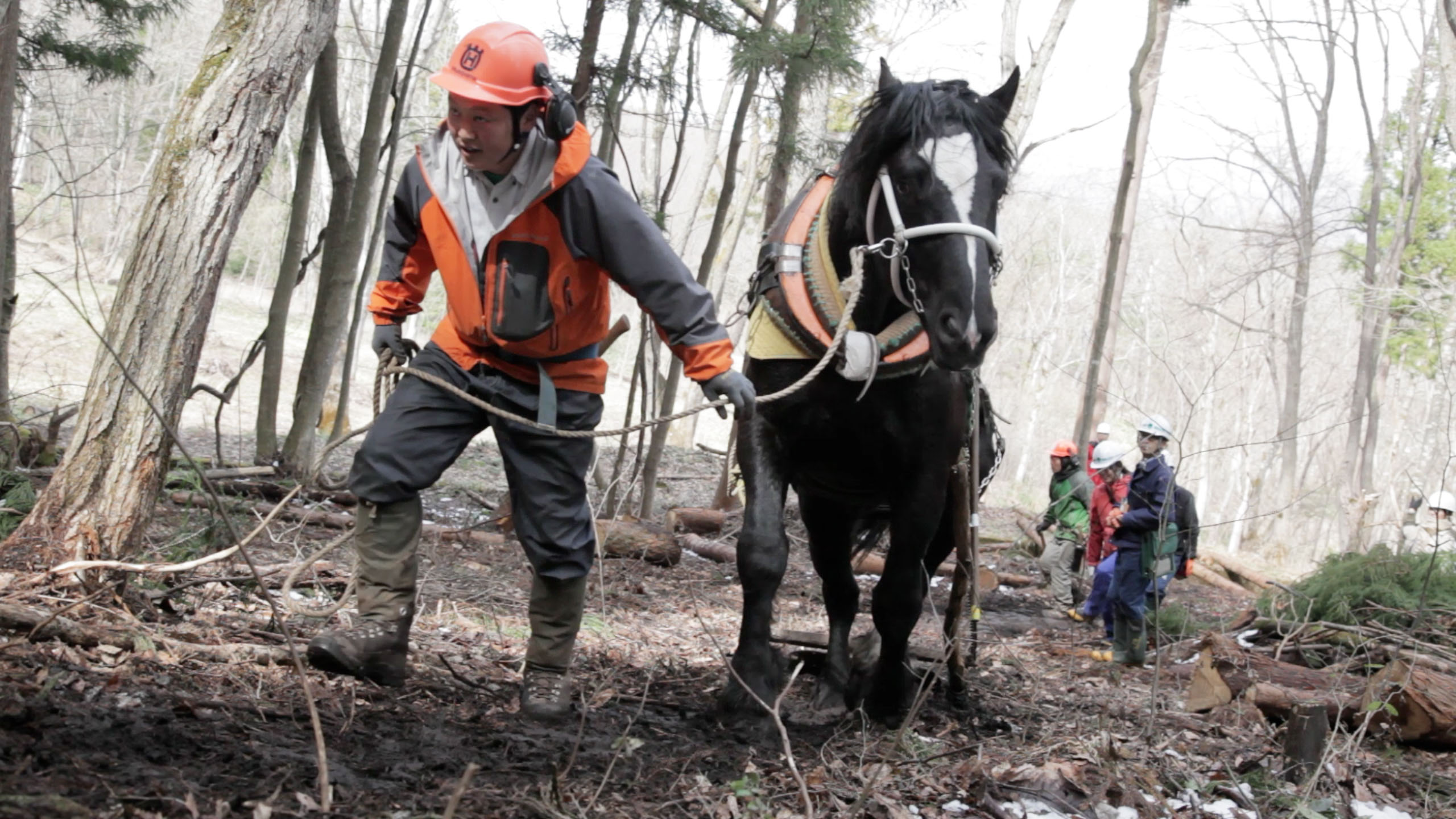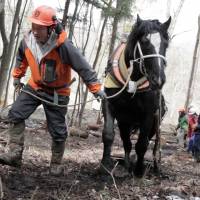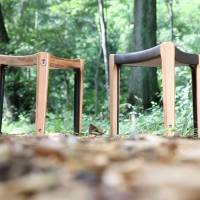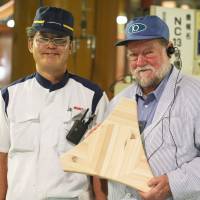Right from the outset when we started planning what is now our magnificent Afan Nature Centre that opened three years ago here in the Nagano Prefecture hills outside Kurohime, I insisted it should be built in wood — and that all the wood must be Japanese.
Although the Centre is a very modern building that will stand up to severe earthquakes, it was designed to be constructed using traditional methods like those used for temples and shrines.
The furniture in the main hall is beautifully lacquered and was made using hardwoods extracted from our Afan Woodland Trust forest here by a company named Oak Village that was established in 1974 by my good friend, Tadashi Inamoto.
However, the very modern furniture in the office was designed and made for us by the Okamura Corp., a leading maker of furniture in Japan that was founded in 1945 with a workforce of former aircraft-builders whose expertise in design and the use of sheet metals and lightweight metal frames was channeled into making furniture. Since 1960, Okamura Corp. has also been doing research into ergonomics, and I can honestly say their office chairs are the most comfortable I've ever used.
In addition, the company is very environmentally concerned, which is why they agreed to take on the (for them) small job of custom-making our office furniture. The desks and counters are hybrids, with metal frames and drawers and tops made from laminated larch trimmed out from our woodlands.
Okamura staff have also been most supportive and active in the work our Trust has been doing in the tsunami-devastated town of Higashi-Matsushima in Miyagi Prefecture, where we are deeply involved in relocating and rebuilding a school and giving the children there outdoor experiences and survival skills.
The new school will be built of timber, and will adjoin an area of living woodland we will manage. Our aim is to assist the teachers in using woods, ponds, streams, paddies and so on as living classrooms.
For the last 30 years, I have been very critical of the single-species plantations of cedars and larches in the national forest adjacent to our trust property. They are spindly and dark and dismal, with the trees so crowded together that barely any light reaches the ground. All that's in stark contrast to our mixed woodland, which we have been nurturing for 28 years.
Last year we made an agreement with the Forestry Agency for us to manage 27 hectares of those plantations. Based on sound research, we will decide how to zone the area, changing some of it into mixed woodland and using other areas to give the conifers more space and light to grow.
I had done this in our own forest with two patches of conifers, one of larch, the other of Japanese cedars. When we first trimmed them out 16 years ago, the trees were just about the diameter of my neck. Now they are the diameter of an oil drum — or more.
After doing the research on what grew on the floor of the national forest, and on what trees to leave, we felled about half the specimens in the first area of cedar plantation we'd designated.
However, as I didn't want to rip up and compact the ground by taking in heavy tracked machinery, we brought horses and their handlers down from Tono in Iwate Prefecture to drag the logs out to a pathway. From there we used one of our own small tracked vehicles to take them to a gravel road accessible to larger trucks. If I'd had a horse-drawn forwarder in place of our tracked vehicle, I certainly would have preferred using that, and now I am hoping to bring one in from Britain.
The cedar logs had 47 annual rings in them, meaning they were planted in the Swinging '60s. Since then there's been virtually no trimming or other maintenance despite the fact that, as trees grow and touch each other, they block out the light so the lower branches die. When this starts to happen you should trim out some of the trees and lop off those lower, light-starved branches. If you don't, you will probably get knotholes in the wood that make it far less commercially useful.
My Okamura Corp. friends had very courageously agreed to use this horse-logged cedar to make specially designed furniture. I played a small part in the designing, and it was agreed the furniture would be very simple and light, and easy to stack and store.
The designers came up with an attractive three-legged stool, with a horse-logging brand mark and a lucky horseshoe design. Cedar wood is light and not really suitable for furniture, so the design became a hybrid, using a metal frame slotted out of sight into the wood, and with a seat cut and carved from cedar and covered with fine cow leather.
Because those trees were so neglected, only about 5 percent of the timber could be used to make furniture. When it comes to another trimming 10 or so years from now, though, we are confident the quality will have improved.
Beyond that, my dream — which, barring extraordinary medical advances, I'm not likely to witness come true — is that there will be huge great cedars left growing here 100 years and more into the future.
Meanwhile, the lumber trimmed off at the milling yard was burned in a furnace and to heat the offices and the chambers in which wood is dried. Other wood discarded on site was converted into chips and used on the tracks and walkways. Some branches we left in piles to decay and provide habitat for small creatures such as snakes, lizards and beetles. Already, in less than a year, the forest floor has turned green and there is more wildlife, while the paths created by the horses and logs will be great for walkers and provide easier access for our researchers.
Above and beyond all this, though, what I really want to do is counter the general opinion in Japan that nothing can be done about all its conifer plantations and densely crowded and neglected woods.
I've got calluses in my ears from having to listen to local pundits' endless excuses for doing nothing to improve forests, forestry — and even their own land. I can get techy, too, about the golf courses and pachinko parlors everywhere — is playing with little balls more important than forestry? Are people that scared of work?
Time and time again through our Trust we have proved that all kinds of things can be done, especially when you get experts involved who really want to help the environment. The Okamura Corp. folk aren't doing this for the money, but together, if we can assist in bringing back a vibrant horse-logging community, using both traditional and modern techniques, we can make our woods and forests so much more productive, diverse, healthy and beautiful.




















With your current subscription plan you can comment on stories. However, before writing your first comment, please create a display name in the Profile section of your subscriber account page.